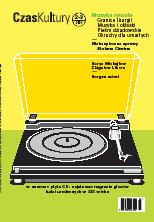Rytuały alkoholowe
Rituals and Alcohol
Author(s): Grzegorz Piątek, Jarosław TrybuśSubject(s): Cultural Essay, Political Essay, Societal Essay
Published by: Stowarzyszenie Czasu Kultury
Keywords: Jarosław Trybuś; Grzegorz Piątek: Rituals and Alcohol; ancient wine-drinking ritual in honour of Dionysis and the Christian sanctification of wine; Solitary drinking of alcohol in the age of consumerism; reaction of art to the ever-present advertisements
Summary/Abstract: In ancient times the cult of Dionysis was associated with festivity and celebrations. The wild parties and processions during which wine was consumed in great quantities to increase the participants’ religious ecstasy would quite often descend into orgies. With the appearance of Christianity the significance of the wine drinking ritual was completely changed. Through Jesus Christ wine became sanctified and this is continued today in Church liturgy where the cup of wine symbolises the blood of the Lord. Outside the church, however, wine is just another alcoholic beverage drunk for social or recreational purposes. What is more, drinking alcohol is becoming an increasingly solitary experience. Modern lifestyles leave increasingly less time for socialising and more and more people are putting cocktail cabinets into their living rooms and celebrating “the drop of their favourite drink” in the quiet of their homes. Thus the painting Absynth by Edgar Degas (1876) seems to have been prophetic. The portrait of a woman sitting over a glass of spirits beside a stranger who is looking away from her strikes the viewer with its sense of emptiness and alienation. The empty bottle standing on the next table only intensifies the sense of the miserable atmosphere captured by the artist. The ever-present advertisements of today lure potential consumers with the promise of an alcoholic pleasure and trance and thus art also deals with the modern drinking ritual. Jeff Koons’ installation, Luxury and Degradation (1986) conveys a contradictory message: various types of paraphernalia, such as a traveller’s cocktail set or a crystal ice cube tray encourage people to drink, but only in their own company. It is obvious that partying and social events with alcohol on the table are still common. These, however, have been stripped of all their previous religious significance.
Journal: Czas Kultury
- Issue Year: 2004
- Issue No: 02-03
- Page Range: 82-90
- Page Count: 9
- Language: Polish
- Content File-PDF

